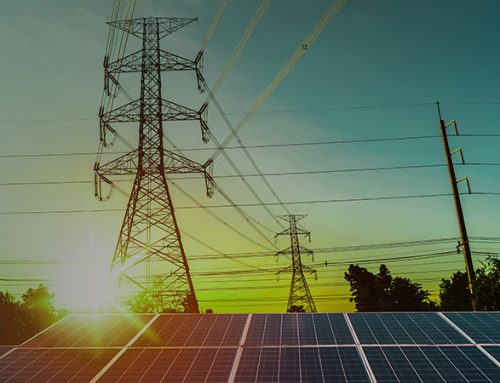In my previous post I wrote about the basic design of the gas and electricity systems and the importance of balancing supply and demand in real time, and how de-carbonisation is posing challenges for maintaining this balance in the power network.
The electricity industry is undergoing a period of significant change. De-carbonisation is leading to the closure of typically large coal-fired power stations, and much of the nuclear fleet is aging and likely to close in the coming decade. At the same time, renewable generation has been heavily subsidised leading to growing amounts of wind and solar in the generation mix.
Wind and solar power are by their nature intermittent, and while their production can be curtailed if the system is over-supplied, they are not able to deliver additional power in the absence of wind and sun. This means that not only are renewables largely unable to support grid stability, but the variations in output undermine the ability of the grid to be maintained in a narrow frequency band. Wind and solar are also not sited in the same way as traditional power stations. New grid infrastructure is required to bring offshore wind, and plant in remote locations, to the sources of demand.
Different countries are taking different approaches to these challenges. The German market is an interesting case study, where renewables have been heavily subsidised and have a mandatory offtake, meaning that if they are able to generate, their power must be delivered to the system. As a result it has become increasingly common for wholesale power prices to be negative in Germany to incentivise thermal generation to turn down.
The impact on the power grids of not only Germany but its neighbours has also been significant. The bulk of Germany’s renewable plant is located in the north of the country, whereas the main areas of industrial demand are in the south. Internal north-south connectivity in Germany is relatively poor, so in order to supply the industrial centres in the south, German renewable power is often transmitted via the systems of Poland and the Czech Republic. Frequent power surges cause those grids to trip so the Polish and Czech regulatory authorities petitioned the European energy regulator, ACER to split the German and Austria single balancing zone to force the network operators to explicitly reserve the required cross-border transmission capacity to better control this process (the single pricing zone was created at a time when interconnector capacity was high relative to demand). This is an on-going debate, but it is clear that the rapid change in Germany’s generating base both in terms of type and location is creating system reliability issues for its neighbours.
It is ironic that Germany’s rapid build-out of renewable power has coincided with the nuclear retirement programme, and a collapse in global coal prices due to the emergence of shale gas in the US which displaced coal from the American electricity system and resulted in significant surplus coal production. Germany has a large number of coal power stations, including lignite which is both cheap and highly polluting, and these developments led to gas generation being more expensive and entirely pushed out of the merit order. As a result, the carbon footprint of Germany’s power system increased despite the significant renewables programme, the subsidisation of which has seem German consumer prices increased by 25% between 2010 and 2014 while wholesale prices have collapsed to historic lows. More than 51% of German domestic electricity prices is made up of levies and taxes.

The UK faces different challenges. Unlike in Germany, renewable power can be curtailed so negative prices are rare. The imposition of a carbon tax in the shape of the Carbon Price Floor has helped to make gas generation more attractive than coal – 8 GW of coal generation was scheduled to close in 2016, although the 1973 MW Fiddler’s Ferry plant has since secured a black start contract which will keep it open for at least another year.
The absence of new gas generation (with the exception of the 880 MW Carrington plant which is due to open this year) has led to concerns that the system margin may become too narrow for comfort, particularly in times of high winter demand. Arguably, recent warm winters have served to make the margin look more comfortable than it is, and it will be interesting to see the National Grid’s analysis of the 2015 winter season in its report due next month.
Concerns over the generation margin led the UK government to introduce a capacity market, with the intention of providing economic incentives to new forms of thermal generation, in the hope that new large CCGTs would be built. Unfortunately the structure of the auctions meant that the clearing prices were too low to provide the required price signals for new CCGTs (with the exception of the Trafford plant, which as a result of the low clearing price and poor spark spread forecasts, has so far failed to secure financing and looks unlikely to be built). In addition, even plant that secured contracts in the auction have announced their intention to close, as the losses they would make by keeping open until 2018 are forecast to be higher than the penalties for failing to honour the capacity contracts.
The auction winners were small diesel generators, undermining the overall de-carbonisation objectives of the government’s energy policy. In response to this, the government has announced a review of the capacity market rules, and an interim auction for the 2017/18 delivery year – this auction is too late for delivery of new CCGTs, but should serve to present existing plant from closing.
These issues illustrate the difficulties in reconciling the various requirements of the electricity system. The government describes it as a “trilemma” – the need to ensure security of supply, decarbonisation and affordability. An early focus on decarbonisation saw security of supply and affordability suffer, and now there is a challenge to improve the security question without imposing unreasonable costs either on consumers or taxpayer.






Leave A Comment